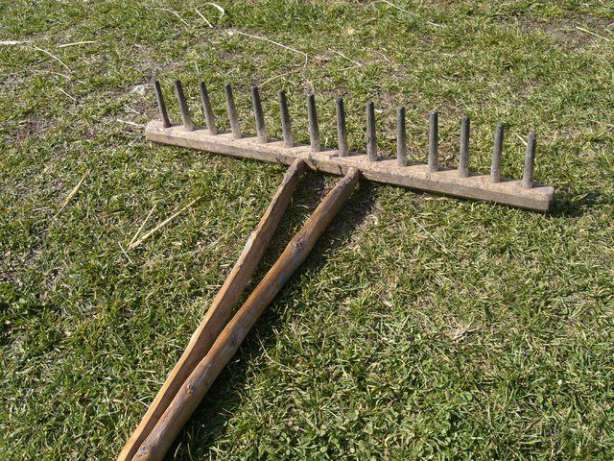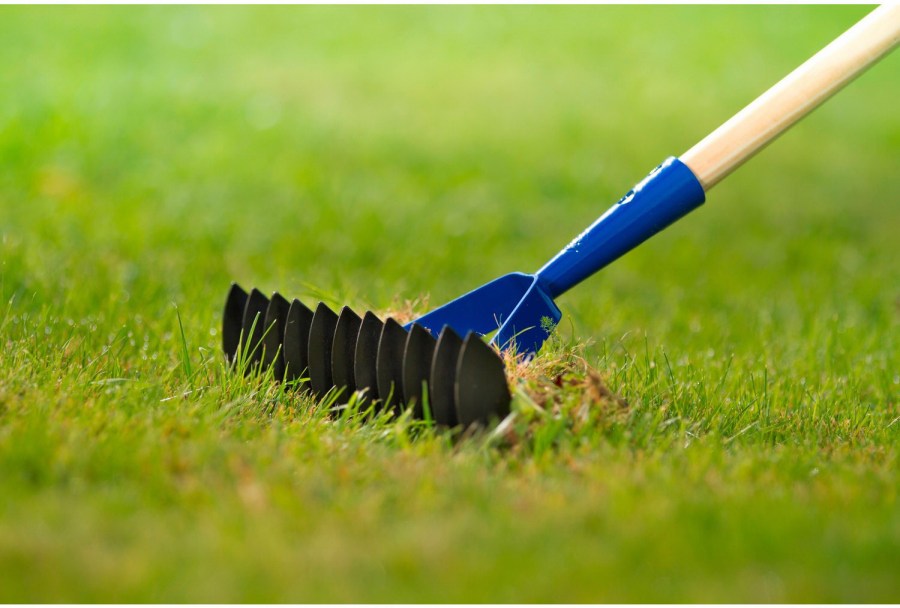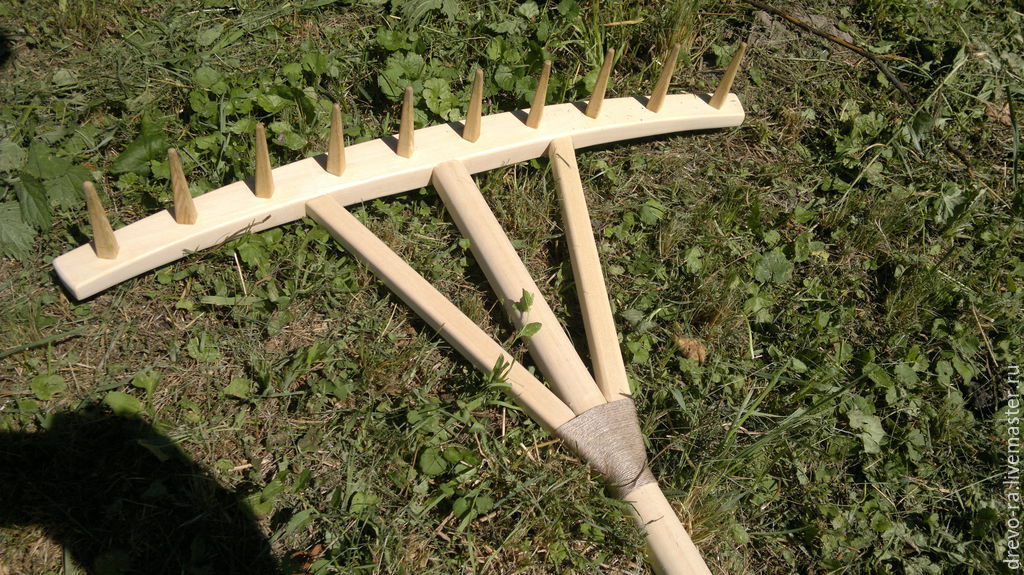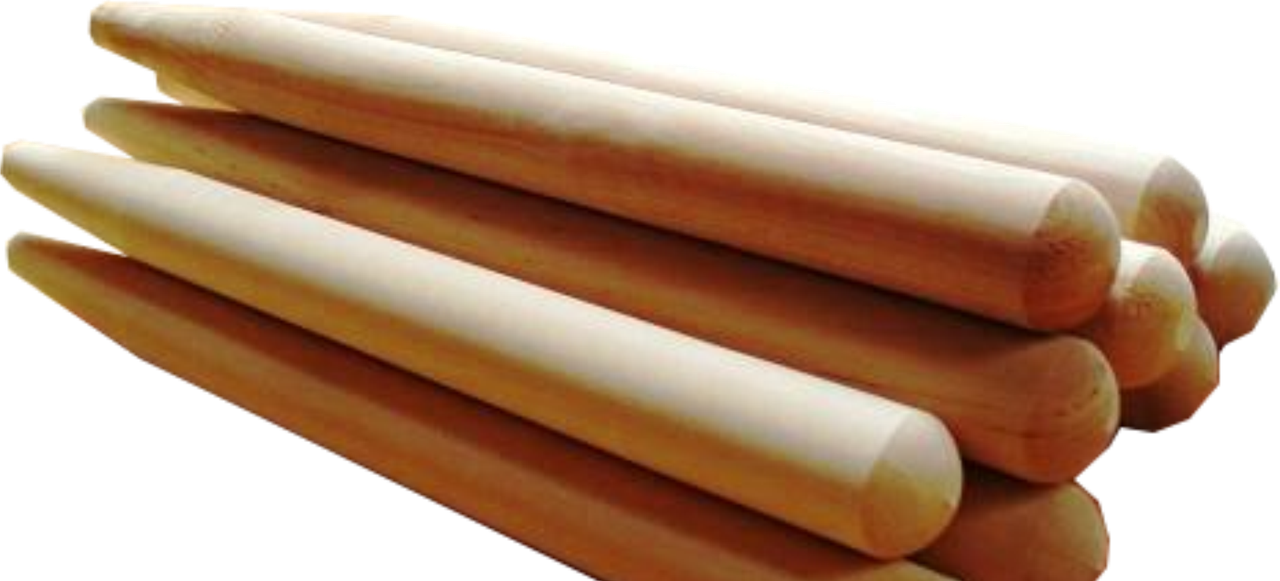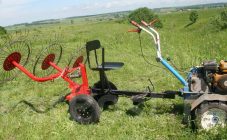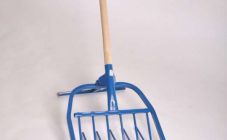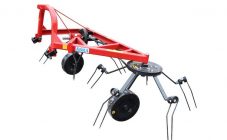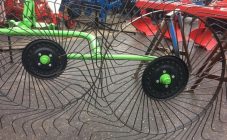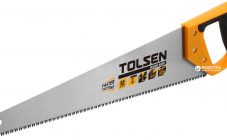Content:
An alternative to such a tool as a rake has not yet been invented. Wooden hay rakes are becoming a rare commodity in stores, mainly metal and plastic products. The metal tool is good for the garden, but it is too heavy for haymaking. Therefore, many gardeners are wondering how to make a hay rake with their own hands?
Description of the rake
Rake in the old days was called any tool suitable for picking up and holding. Even the hand was often called a rake, not in the offensive sense of the word. Cutlery, a fork and a spoon are still called "rakes" in some villages. Modern hay rakes have a wide comb and are designed for raking, clumping and turning the cut grass.
A lightweight nylon / plastic rake is available from the store. But such a tool has a drawback. In the event of a breakdown, it remains only to throw it away, since it cannot be repaired. For harvesting hay and cut grass, a straight type wooden rake with a wide base and short tines is used.
Principle of operation
A rake is an agricultural tool used to remove clods, weed roots, and loosen soil between plants. Wooden products are used for garden work on cleaning, loosening and raking hay and grass. The design of the tool is represented by a wooden block with pointed teeth, a handle and a coupling.
A straight hay rake looks like a "T", the ridge is attached perpendicular to the handle. A good tool should have a light, long handle and not create unnecessary stress while working. The teeth should be short, wide apart, slightly curved inward. Usually their number does not exceed 7-9 pieces.
Removing hay with a homemade rake is as effective as using a commercial tool. The rake is thrown forward, grabbed part of the grass and pulled over. For raking dry grass, a model with wide, flat tines with narrow spaces between tines is best.
Manufacturers
A ready-made rake for agricultural work can be purchased at any specialized store or ordered from the online store.
Well-known manufacturers of rake, as well as other garden tools:
- domestic: Bison, Tsentroinstrument, Sturm;
- foreign: HERZ, MATRIX, Wolf-Garten and others.
When buying a tool, you need to pay attention to the following factors:
- strength;
- functionality;
- quality of materials.
Operation and care
To extend the life of your garden tool, you need to take some care after use. The rake after working in the garden must be cleaned of earth lumps and grass. Metal parts must be cleaned of rust with a brush or special tool.
Do not throw a rake so as not to run the risk of injury. After work, you need to get accustomed to immediately remove the gardening tools in the place designated for them. Wooden handles should be sanded periodically to make them smooth. It is recommended to wipe them with linseed oil to avoid drying out of wood.Periodically, you need to re-coat them with paint or varnish.
Homemade hay rake
To make a wooden hay rake, you need several types of wood. Usually the cutting is made from conifers. The block and teeth must be made of hard hardwood: birch, elm, ash, mountain ash. It is better to take wood without knots.
The main characteristics of wood species:
- Pine has hardness, lightness, moisture resistance, biostability, strength.
- Birch wood is lightweight, durable and easy to work with.
- Elm has the strength, hardness and resilience of oak. Waterproof, but difficult to cut with cutting tools.
- Ash is superior in strength to oak, resistant to deformation.
Block
The hay rake is started from the block. The bark is removed from the birch block, and then dried in a dark and dry place. The shape of the last can be straight or curved. Pad parameters:
- length - 50-60 cm;
- width - 5 cm;
- height - 3 cm.
A pair of square or round holes for the future handle fork are made between the holes for the teeth. In this case, perpendicularity must be observed.
Teeth
The same wood is used for the teeth as for the last. You can take a birch stump 135 mm long. The end side of the lumps is lined with squares with a side of 13-15 mm. With the help of a hatchet, the chock is split according to the markings. Using a sharp knife, each of the blanks is brought to the desired tooth shape.
Each tooth consists of a working part and a head. The length of the head is determined by the thickness of the pad. Its diameter should exceed the diameter of the hole in the block by 1-2 mm. This will provide a firm, snug fit. Sharp edges must be dulled to avoid scuffing the walls of the hole when seating the tooth. The working part of the tooth is 95 to 100 mm in length. The ends of the teeth are formed with a knife.
To avoid splitting the pads, a wedge clamp is used when the teeth are seated in the holes. The teeth are driven into the holes with a hammer or mallet. To avoid falling out and losing the teeth, you can secure them with nails.
Stalk
A homemade handle must be made of spruce or pine. Its length is 170-180 cm, diameter is from 30 to 35 mm. If a tree that has just been felled is used, it must be peeled of bark, dried in an upright position and smooth to the surface.
At the end of the cutting, a cut is made for a fork with a depth of about 25 cm. This is easy to do with a longitudinal hacksaw.
The ends of the fork are pushed apart in different directions by a distance of about 10 cm.
Round or square spikes are made at the ends of the resulting fork, in shape and size they should correspond to the holes cut in the block. After that, you can put a block with teeth on the spikes of the cutting fork. Wooden wedges are used to secure the structure.
The final stage
The rake handle should be sanded so as not to injure your hands while working. The shoe and the fork should be coated with protective agents: oil paint or waterproof varnish. The hay rake is ready.
The hay rake has served gardeners for many years, being an indispensable element of gardening equipment.
